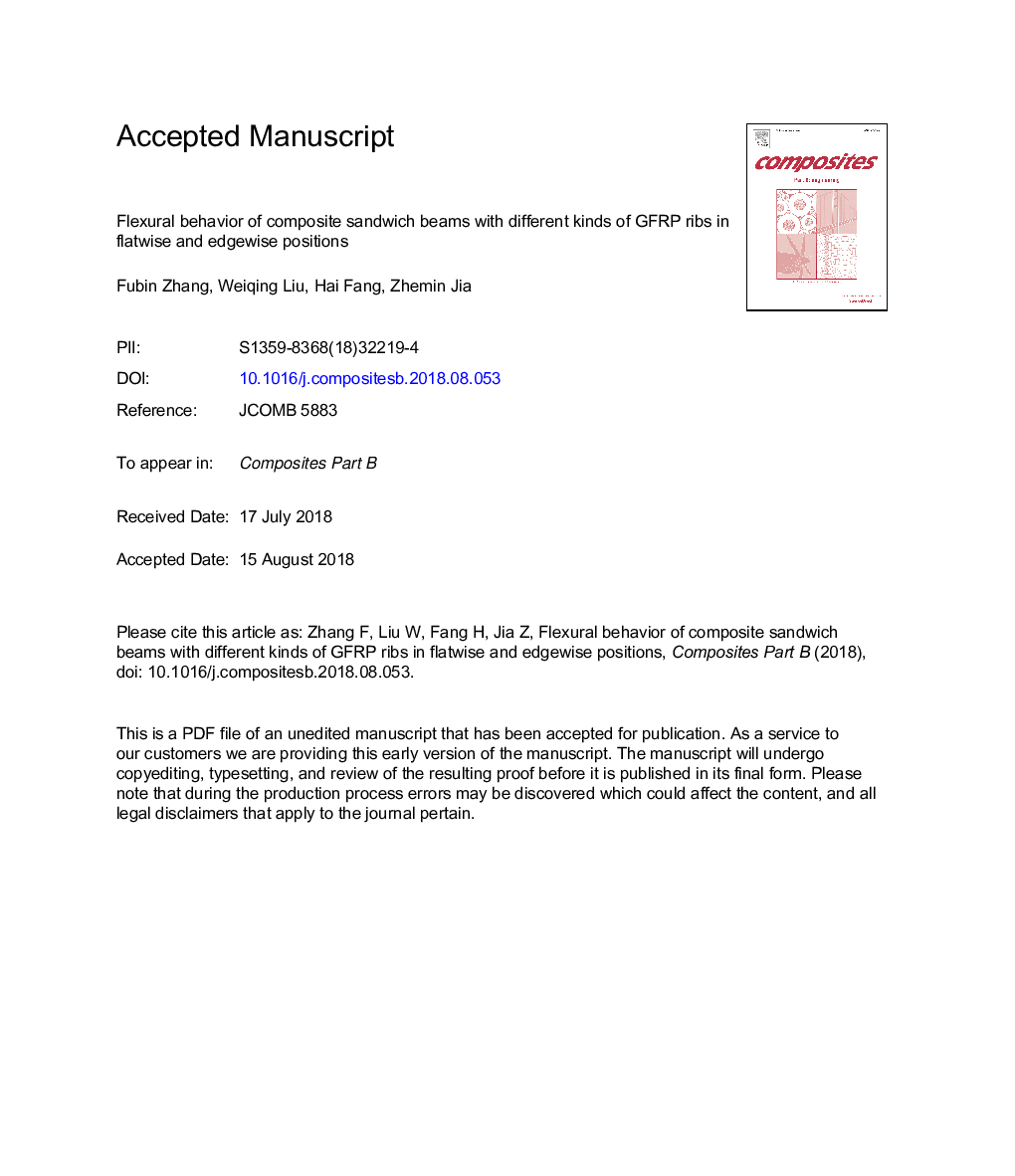| Article ID | Journal | Published Year | Pages | File Type |
|---|---|---|---|---|
| 10134025 | Composites Part B: Engineering | 2019 | 30 Pages |
Abstract
This paper investigated the flexural behavior of composite sandwich beams, composed of glass fiber reinforced polymer (GFRP) skins and a polyurethane (PU) foam core with different kinds of GFRP ribs reinforcement, in flatwise and edgewise positions. The GFRP ribs, consisted of longitudinal, transverse and horizontal ribs, respectively, were embedded inside of the PU foam core. Twenty specimens were tested under four-point bending to verify the influence of the GFRP ribs and beam orientation on the bending stiffness, ultimate load bearing capacity, and failure modes of sandwich beams. It was found that changing the beam orientation from flatwise to edgewise change the beam failure mode from foam core shear failure to skin compressive failure. The sandwich beam's high stiffness and ultimate load bearing capacity can be efficiently utilized by placing them in edgewise position, and the longitudinal ribs played a major role on the bending stiffness and ultimate load bearing capacity compared with the transverse and horizontal ribs in flatwise position. Furthermore, an analytical model accounting for shear and flexural rigidities was proposed to predict the deflection and ultimate load bearing capacity of composite sandwich beams with different kinds of GFRP ribs in flatwise and edgewise positions. The analytical results were agreed well with test results.
Related Topics
Physical Sciences and Engineering
Engineering
Engineering (General)
Authors
Fubin Zhang, Weiqing Liu, Hai Fang, Zhemin Jia,
